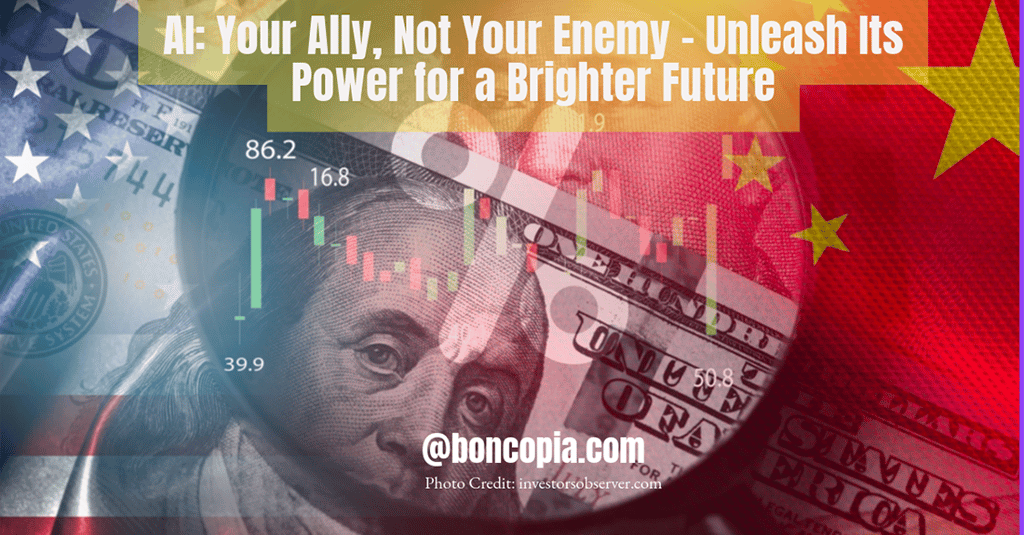The U.S.-China Trade War: Is the "Sleeping Dragon" Ready to Roar?
5/4/20254 min read


The U.S.-China Trade War: Is the "Sleeping Dragon" Ready to Roar?
Published on Boncopia.com | May 4, 2025
A Clash of Titans in Global Trade
The U.S.-China trade war has been a rollercoaster of tariffs, tensions, and bold statements, and a recent viral post on X has reignited the debate. On May 4, 2025, user @charise_lee
shared a TikTok clip from The Cradle, featuring Sharmine Narwani discussing the tariff issue, paired with a powerful quote from Victor Gao, a Chinese analyst: "China has been here 5000 years before the US ever existed. We have survived and will survive another 5000 years without the US." The post uses the metaphor of a "sleeping dragon" to describe China, a nation that, when provoked, might unleash a fierce response. But what does this mean for global trade, and how are people reacting to this escalating conflict?
The "Sleeping Dragon" Awakens
Victor Gao, a former translator for Chinese leader Deng Xiaoping and a voice from the Centre for China and Globalisation, has been vocal about China’s stance. In an April 2025 interview with Channel 4, Gao dismissed the idea that China would crumble under U.S. tariffs, which target 15% of its export market. He argued that China’s stability, predictability, and long-term planning—spanning "the coming 100 years"—give it an edge. The "sleeping dragon" metaphor in the X post captures this resilience: China, with its 5,000-year history, isn’t fazed by short-term economic jabs.
Meanwhile, the U.S., under President Trump, has doubled down on tariffs. According to a Tax Foundation report from April 2025, Trump’s administration has imposed tariffs on over $380 billion worth of Chinese goods since 2018, amounting to a tax increase of nearly $80 billion. In retaliation, China has slapped tariffs on $106 billion of U.S. goods, costing an estimated $11.6 billion. Recent moves in 2025—like Trump’s February executive orders adding 25% tariffs on Canada and Mexico and a 10% hike on China—show no signs of de-escalation. On March 4, 2025, tariffs on China rose another 10%, while exemptions for Canada under the USMCA trade deal were temporary, expiring in April.
The Luxury Goods Twist
The X thread took an unexpected turn when users brought up luxury goods. A reply from @islwyn_izzy asked, "Who in their right mind pays $60,000 for a handbag?!" This ties into a BBC Verify investigation from April 2025, which explored viral TikTok claims that luxury brands are increasingly manufacturing in China to dodge tariffs. As both nations raise import taxes, companies may be shifting production to cut costs—a move that could undermine the "Made in Italy" or "Made in France" allure of high-end goods. User @roospooscreate even speculated about a conspiracy: Could Trump, with his business ties in China, be orchestrating this to disrupt luxury markets for his own gain?
A Polarized Reaction
The X replies reveal a deeply divided audience. Some, like @souparmonTN and @castilloadina, accused the original poster of "simping for communists" and supporting the CCP, reflecting a strong anti-China sentiment. Others, like @ubuto23, called the post "pure CCP cope," suggesting it’s propaganda to mask China’s vulnerabilities. On the flip side, @MICHAEL69670851pointed to broader geopolitical shifts, noting that Trump’s tariffs have pushed Mexico, Canada, the EU, and China toward freer trade among themselves, potentially isolating the U.S. They shared an image of a dragon (China) and an eagle (U.S.) in battle, captioned "The Art of War vs. The Art of the Deal"—a fitting visual for this showdown.
Economic Fallout: Who’s Really Hurting?
The economic impact is murky. A January 2024 study by David Autor, cited by the Tax Foundation, found that Trump’s 2018-2019 tariffs didn’t boost U.S. employment in protected sectors, while China’s retaliatory tariffs hit American agriculture hard. Fast forward to 2025, and the stakes are higher. Gao warned in his Channel 4 interview that without major interventions, a global recession looms. China, however, seems prepared. Since the COVID-19 pandemic, it has been diversifying trade partnerships, reducing reliance on the U.S. market. The X post’s claim that China will "survive another 5000 years without the US" might not be mere bravado—it could reflect a calculated shift in strategy.
What’s Next for Global Trade?
The U.S.-China trade war isn’t just about tariffs; it’s a battle of ideologies, histories, and economic strategies. The "sleeping dragon" metaphor resonates because it highlights China’s long-term perspective against the U.S.’s more immediate, deal-driven approach. As @hjemmelavet noted in the X thread, "Gee, we have known this for decades. Fools wanna be fooled." Are we underestimating China’s resilience, or is the U.S. playing a smarter game than we think?
For consumers, the impact is already tangible. From luxury handbags to everyday goods, prices are rising as tariffs ripple through supply chains. Businesses, caught in the crossfire, are forced to adapt—whether by relocating production or absorbing costs. And for the global economy, the risk of recession looms large if this dragon and eagle can’t find a way to coexist.
Let’s Talk: What Do You Think?
The U.S.-China trade war is far from over, and the "sleeping dragon" might just be waking up. What do you think—can China outlast the U.S. in this economic standoff? How will tariffs reshape the global market for luxury goods and beyond? And most importantly, are we on the brink of a recession, or is this just another chapter in a long geopolitical saga? Share your thoughts in the comments—we’d love to hear from you!
hello@boncopia.com
+13286036419
© 2025. All rights reserved.